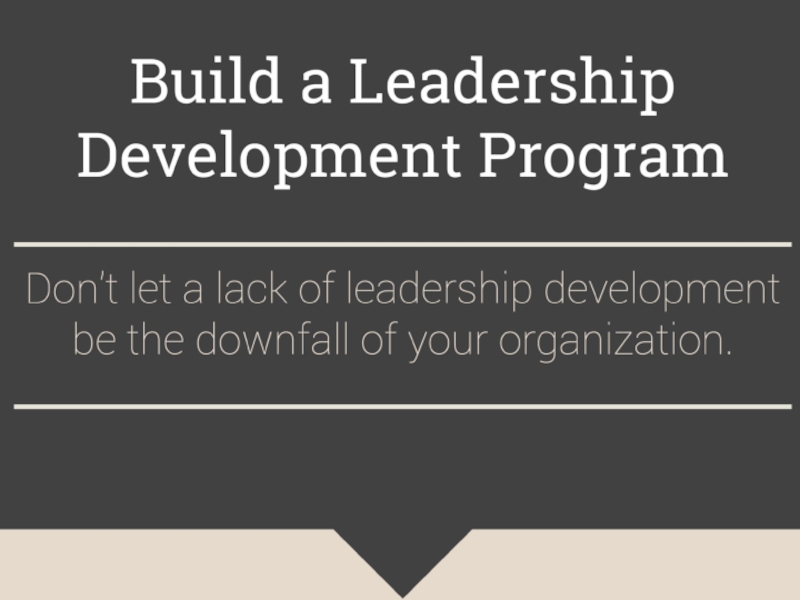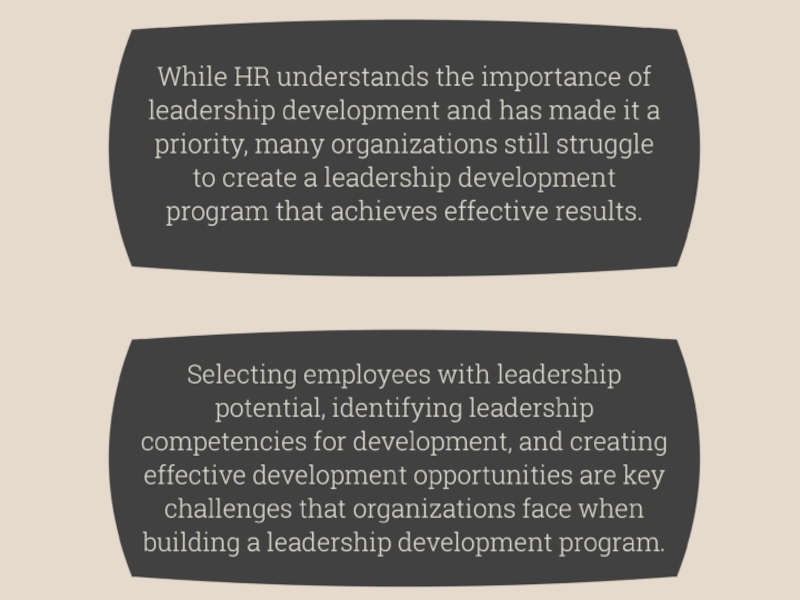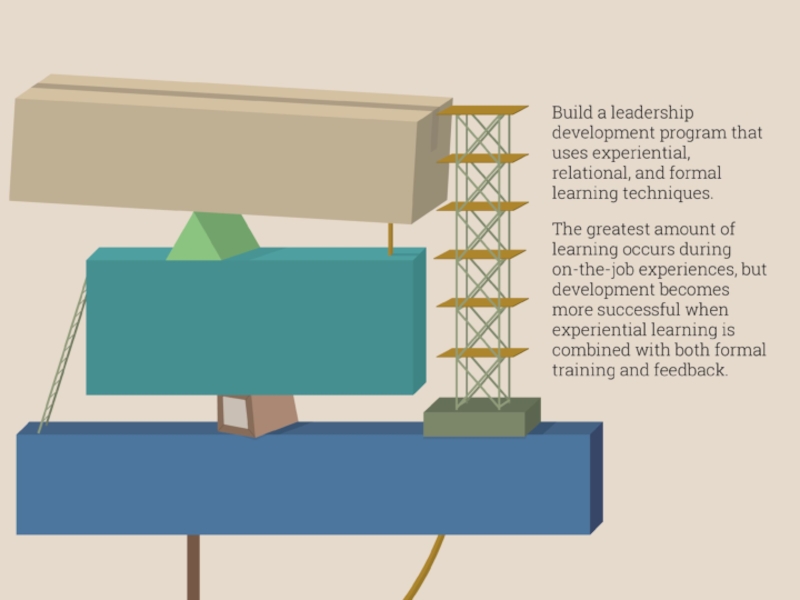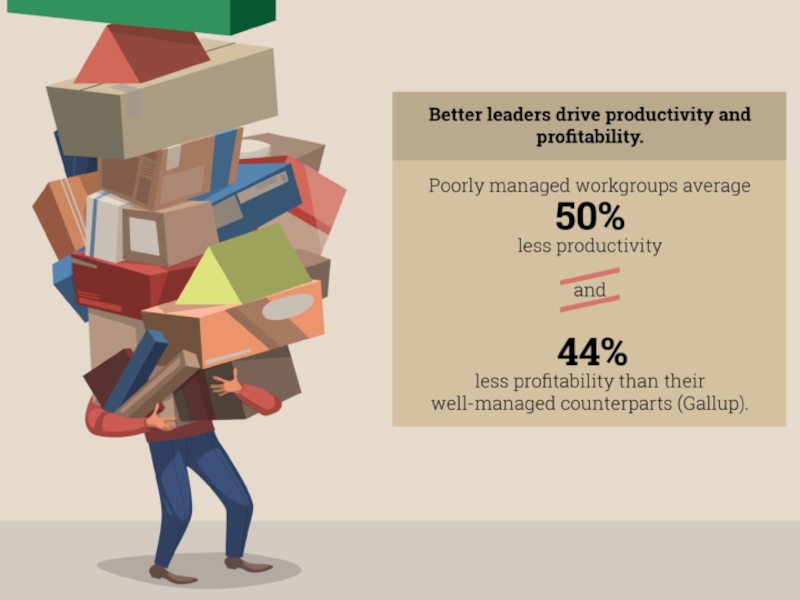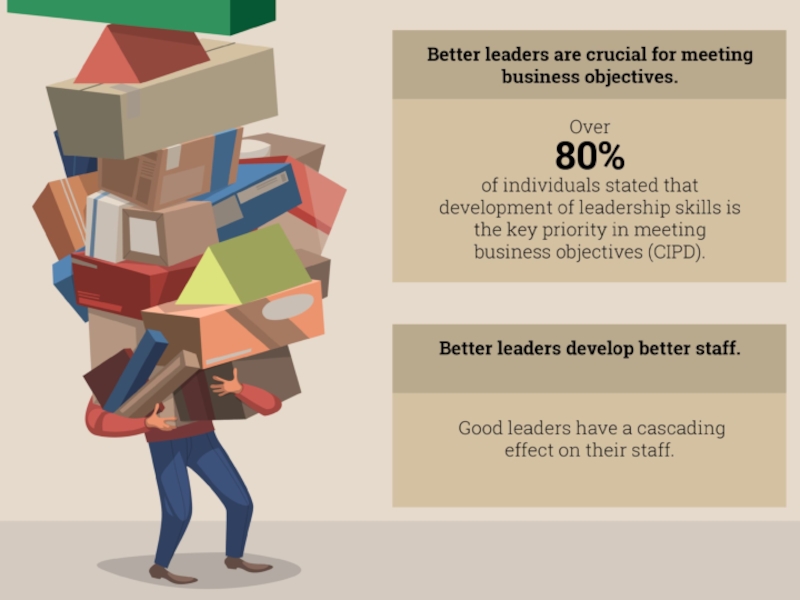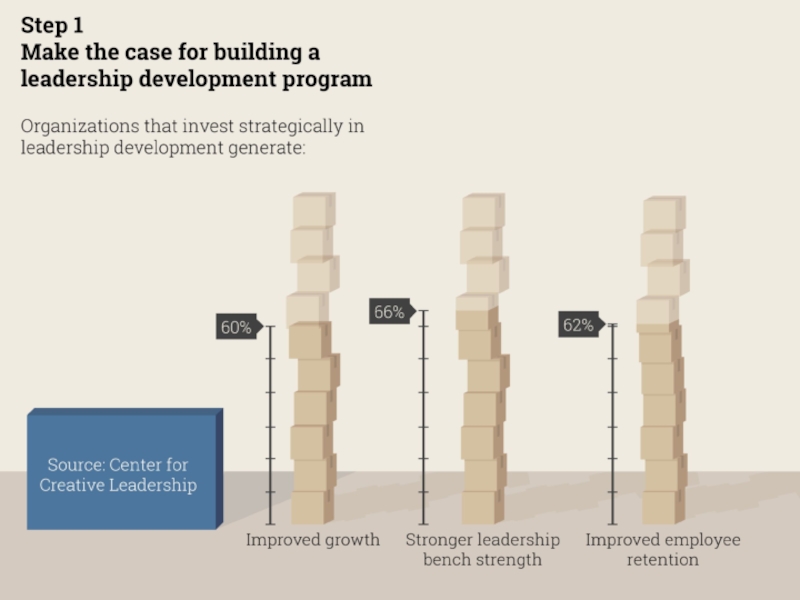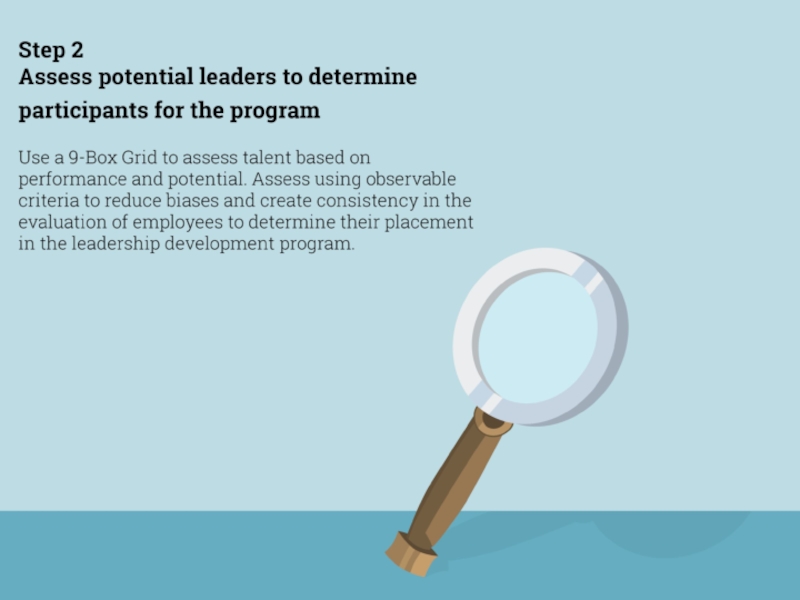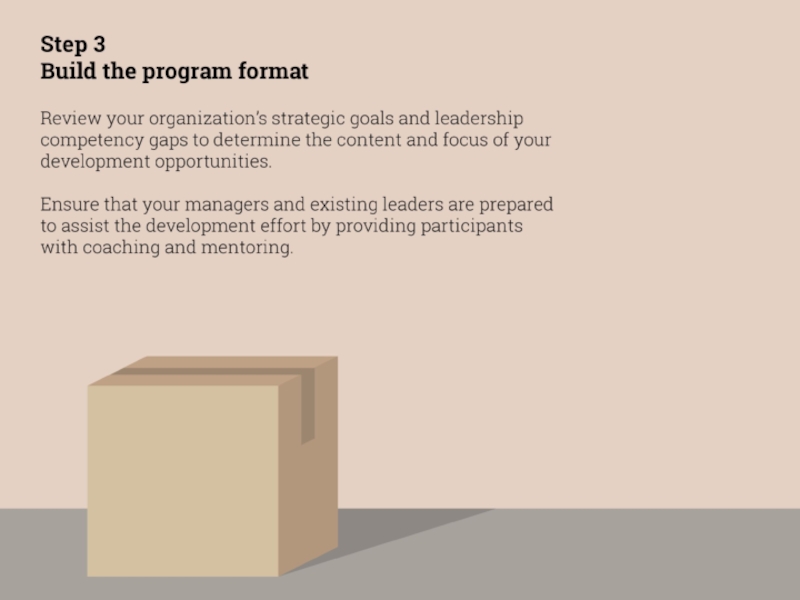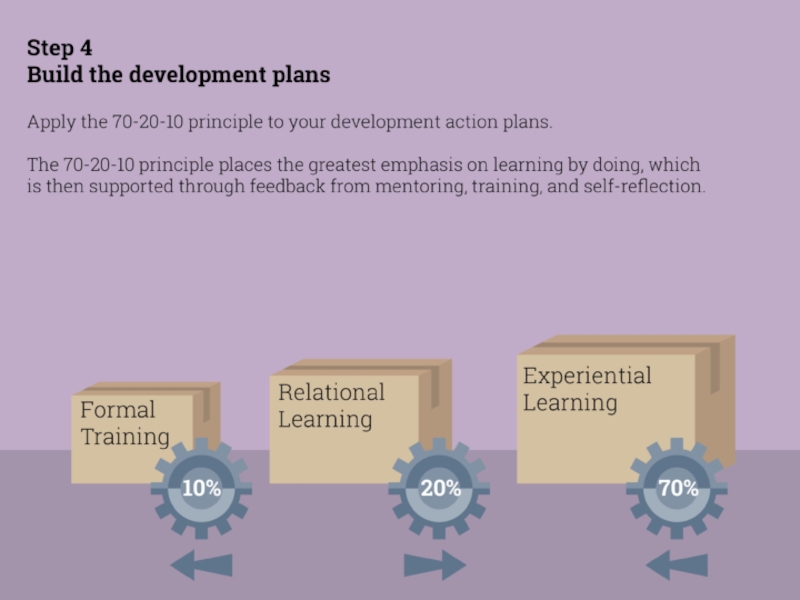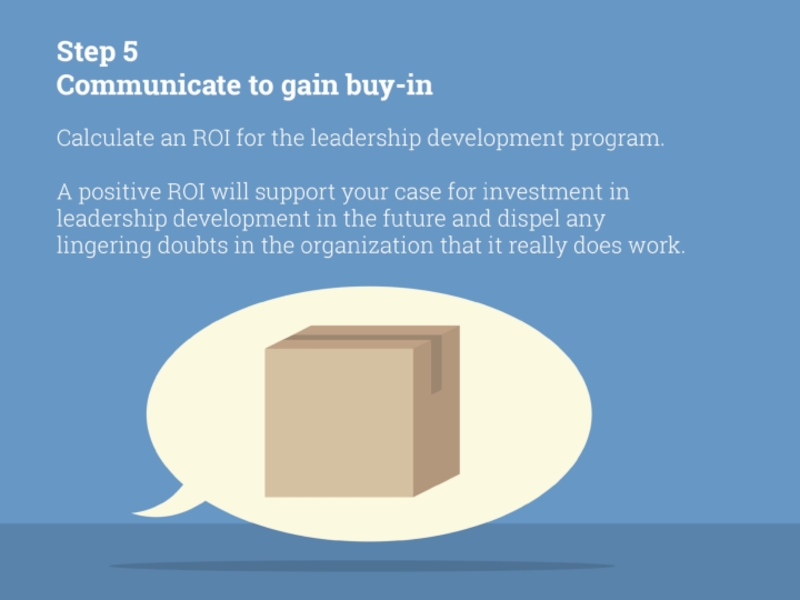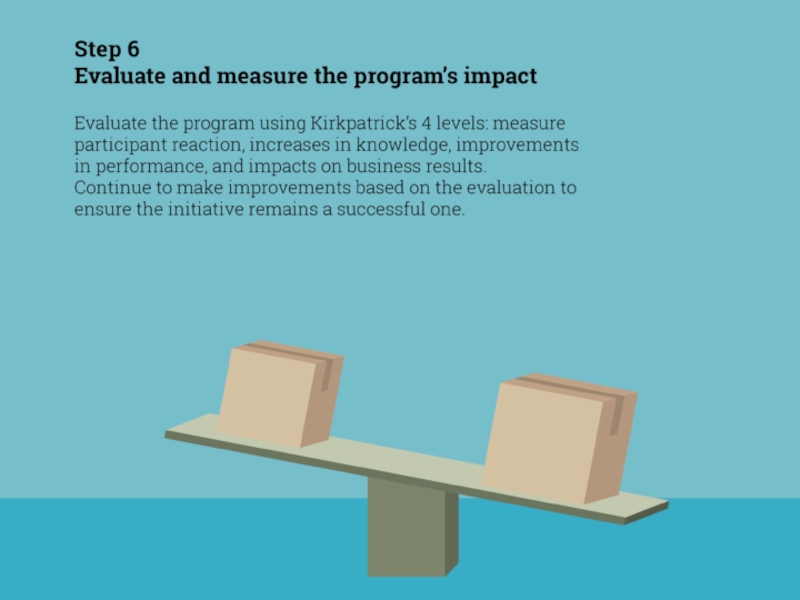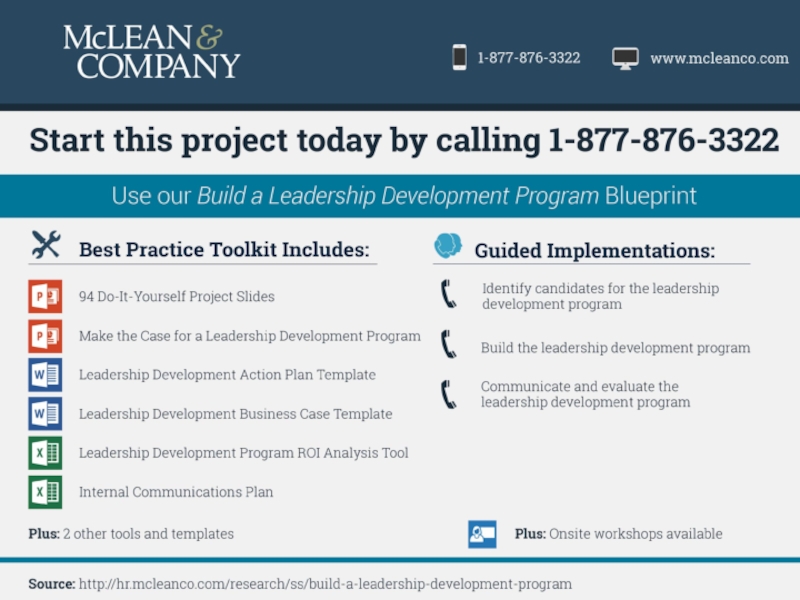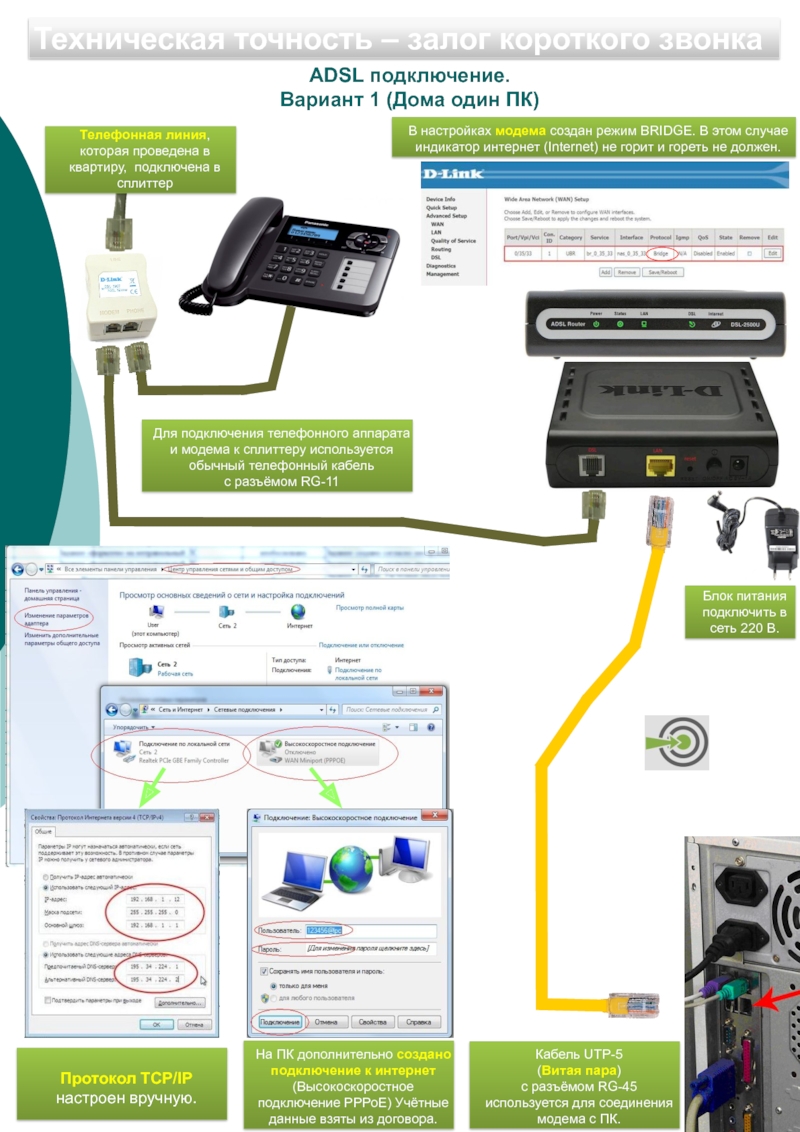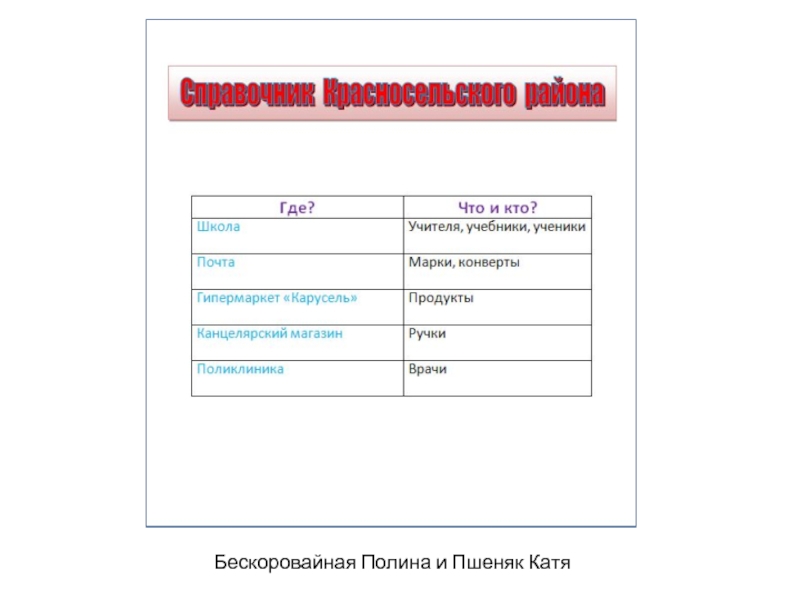be the downfall of your organization.
While HR understands the importance of leadership development and has made it a priority, many organizations still struggle to create a leadership development program that achieves effective results.
Selecting employees with leadership potential, identifying leadership competencies for development, and creating effective development opportunities are key challenges that organizations face when building a leadership development program.
Build a leadership development program that uses experiential, relational, and formal learning techniques.
The greatest amount of learning occurs during on-the-job experiences, but development becomes more successful when experiential learning is combined with both formal training and feedback.
Better leaders drive productivity and profitability. Poorly managed workgroups average 50% less productivity and 44% less profitability than their well-managed counterparts (Gallup).
Better leaders are crucial for meeting business objectives. Over 80% of individuals stated that development of leadership skills is the key priority in meeting business objectives (CIPD).
Better leaders develop better staff. Good leaders have a cascading effect on their staff.
Organizations that invest strategically in leadership development generate:
• 60% improved growth.
• 66% stronger leadership bench strength.
• 62% improved employee retention.
(Source: Center for Creative Leadership)
Use a 9-Box Grid to assess talent based on performance and potential. Assess using observable criteria to reduce biases and create consistency in the evaluation of employees to determine their placement in the leadership development program.
Review your organization’s strategic goals and leadership competency gaps to determine the content and focus of your development opportunities.
Ensure that your managers and existing leaders are prepared to assist the development effort by providing participants with coaching and mentoring.
Apply the 70-20-10 principle to your development action plans.
The 70-20-10 principle places the greatest emphasis on learning by doing, which is then supported through feedback from mentoring, training, and the act of self-reflection.
(70% - experiential learning, 20% - relational learning, 10% - formal training)
Calculate an ROI for the leadership development program.
A positive ROI will support your case for investment in leadership development in the future and dispel any lingering doubts in the organization that it really does work.
Evaluate the program using Kirkpatrick’s 4 levels: measure participant reaction, increases in knowledge, improvements in performance, and impacts on business results.
Continue to make improvements based on the evaluation to ensure the initiative remains a successful one for your organization.
- Главная
- Разное
- Дизайн
- Бизнес и предпринимательство
- Аналитика
- Образование
- Развлечения
- Красота и здоровье
- Финансы
- Государство
- Путешествия
- Спорт
- Недвижимость
- Армия
- Графика
- Культурология
- Еда и кулинария
- Лингвистика
- Английский язык
- Астрономия
- Алгебра
- Биология
- География
- Детские презентации
- Информатика
- История
- Литература
- Маркетинг
- Математика
- Медицина
- Менеджмент
- Музыка
- МХК
- Немецкий язык
- ОБЖ
- Обществознание
- Окружающий мир
- Педагогика
- Русский язык
- Технология
- Физика
- Философия
- Химия
- Шаблоны, картинки для презентаций
- Экология
- Экономика
- Юриспруденция
